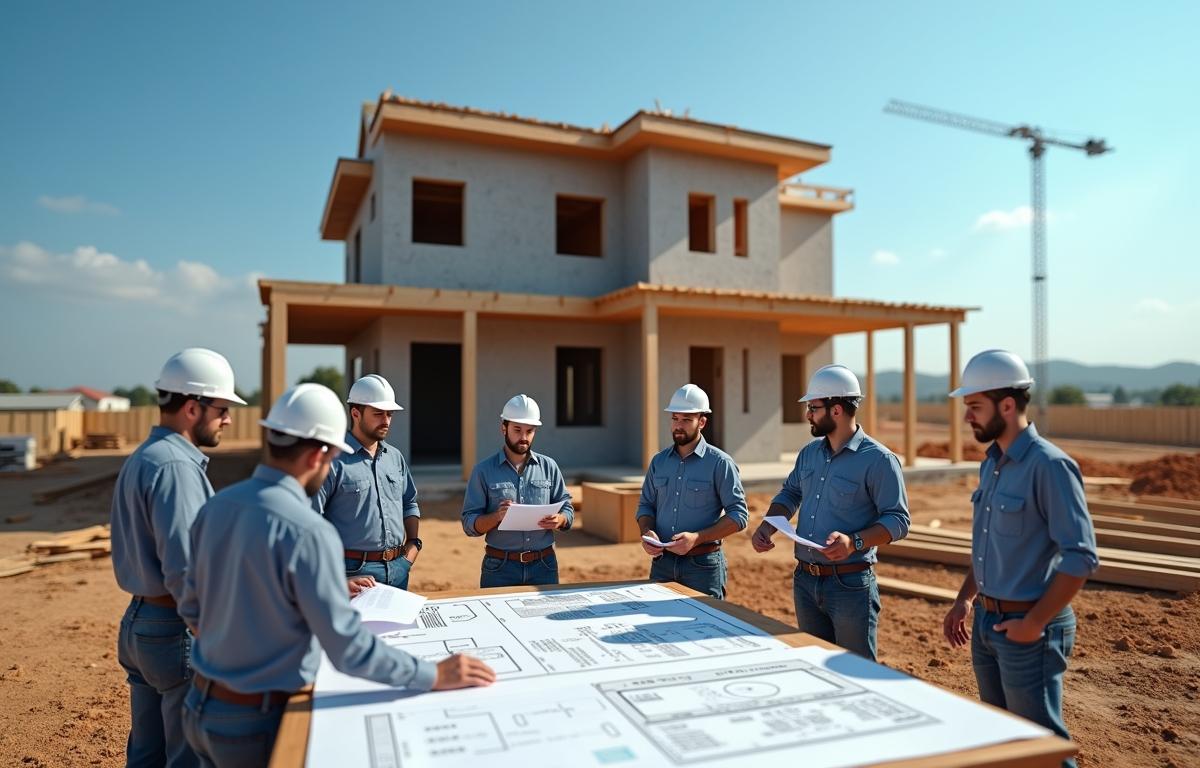
Budgeting Tips for Building a New Construction Home
When planning a new construction home, budgeting tips are crucial for managing costs effectively. Whether you’re aiming for a cozy retreat or a modern masterpiece, having a solid financial plan can safeguard your investment. Building from the ground up offers amazing freedom, yet it can also present unexpected expenses that challenge your wallet. That’s why consistent planning and careful cost evaluation are key to keeping things manageable.
Many people get excited about designing their floor plan or picking out materials before they think about finances. However, focusing on expenses first can help you steer clear of pitfalls like project delays or sudden cost overruns. By thoughtfully analyzing each line item and finding ways to save, you can keep your construction journey pleasant and less stressful.
Assessing Your Construction Costs
One of the biggest steps toward staying on track is figuring out the major expenses at play. This includes the price of land, design fees, permits, and any unique site requirements. Make sure you gather estimates from different sources to gain a realistic picture of what your initial costs might be.
It’s tempting to assume the cheapest option is best, but balancing affordability with quality is vital for your new construction. If you go too cheap, you risk issues that might cost even more to fix later. An open conversation with architects, contractors, and suppliers can help you find cost-efficient solutions without sacrificing durability or style.
Evaluating Labor and Material Rates
When drawing up your home building budget, pay special attention to contractor fees and current material rates. Different contractors may charge distinct prices for labor depending on their skill and availability. Meanwhile, material costs fluctuate with factors such as supply chain conditions and market demand. Researching these trends can help you lock in better deals and avoid sudden price spikes later on.
Setting Boundaries for Your Home Building Budget
Setting clear boundaries for your expenditures upfront can prevent frustrating challenges as construction progresses. You can start by identifying your maximum comfort limit. That means deciding how high you’re willing to go before your finances get squeezed. Without this ceiling in mind, even small additions can creep in over time and inflate your final bill.
Be realistic about what you can afford versus what you wish you could afford. That might mean adjusting your square footage, simplifying design details, or reconsidering luxury touches. Knowing where to compromise allows you to keep essential elements intact, while leaving room for well-chosen upgrades that truly matter to you.
Setting Contingency Funds
Unexpected problems can happen in any construction project, from sudden soil issues to unplanned code requirements. To handle these surprises gracefully, create a reserve or contingency fund. Even a small buffer can give you peace of mind and prevent the shock of unplanned bills. As a rule of thumb, saving around 10% of your overall budget for the unexpected can work well.
Planning Your Construction Timeline Wisely
Delays can lead to higher labor costs and more money spent on temporary lodging if you’ve sold your old place or ended a rental lease. When setting your timeline, think about seasonal factors that might slow work, such as heavy rain or extreme temperatures. By aligning tasks carefully, you reduce idle days and lower extended labor expenses.
Collaborate with your contractor to develop a schedule that respects both material lead times and your family’s daily needs. Quick, decisive communication helps everyone stay aligned on deliverables. If issues appear, meeting them head-on can prevent minor setbacks from evolving into expensive delays.
Working with Professionals
One way to protect your budget is to partner with reputable architects, project managers, or general contractors. Their expertise often means fewer mistakes and reworks, which keep total costs in check. Professionals can also guide you to smart planning decisions, such as investing in energy-efficient windows or choosing durable roofing materials that won’t need frequent replacement.
Saving Strategies for Materials and Labor
Comparison shopping plays a big role in managing costs. Seeking quotes from multiple suppliers helps you find better deals on everything from lumber to interior finishes. You can also ask about contractor discounts or bulk purchase options if you anticipate large orders. In some cases, reusing or repurposing materials can introduce character into your home while trimming expenses.
Labor typically accounts for a significant portion of a new construction budget, so weigh the pros and cons of smaller crews versus bigger teams. A more experienced but lean crew may finish tasks more efficiently. However, they might charge a premium for their expertise. Balancing these trade-offs can help you avoid overshooting your target budget.
Negotiating Contractor Rates
Negotiation isn’t about cutting corners or bargaining someone down to an unfair rate. Instead, it’s a discussion to ensure you’re getting value for your money. Clearly outline your project’s scope, timeline, and any special requests before discussing final rates. Contractors are often open to adjusting costs if it ensures a smoother project path and fewer hiccups.
Protecting Your Investment with Smart Choices
Sometimes it’s tempting to skip site inspections or permit fees to save a bit of cash, but those shortcuts can backfire. If your construction doesn’t meet local codes, you may face fines or forced renovations down the road. Staying up to date on all building regulations keeps you on the right side of the law and ensures a safer structure.
Consider investing in quality items that will stand the test of time. Cheaper options can mean quicker wear and tear, which might trigger replacement costs. By choosing sturdy materials and prioritizing energy-efficient systems, you can see real returns through decreased utility bills and fewer maintenance hassles. Over the long term, these decisions protect your wallet and boost your property value.
Incorporating Future-Proof Features
A thoughtful design extends beyond immediate needs. Think about how your family’s requirements might evolve in a few years. Adding flexible spaces, planning for aging in place, or installing smart-home technology can keep your property appealing. These considerations can also reduce renovation costs in the future, making good use of your resources from the start.
Securing Financing and Staying on Track
Tackling the costs of a build all at once can be overwhelming, so explore available financing options. Mortgages specifically designed for construction can give you staged payments tied to project milestones. This structure can simplify how you distribute funds throughout each construction phase. Just be aware of potential interest rates and additional lending fees that could impact your bottom line.
Whatever loan you choose, tracking all transactions is vital. Keep records of invoices, receipts, and bank statements so you always know where your money is going. If any category starts creeping upward, reevaluate your priorities and trim nonessential additions. Staying flexible with these smaller details can let you cover the truly important expenses without blowing your budget.
Keeping an Ongoing Maintenance Outlook
Even after construction wraps, your property will need regular upkeep. Setting aside funds each month for maintenance can spare you from being caught off-guard by sudden repairs. Over time, proactive care helps preserve the value of your home and ensures you don’t lose the financial protections you carefully set up from the beginning.


